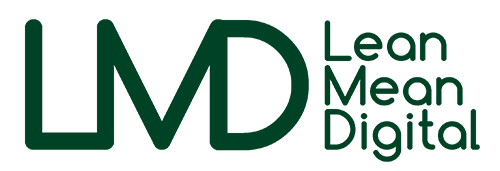The Death Star: An Agile Scrum Project or Not?
The internet is actually full of discussions in ironically low tech resource areas but there are some key things that stick out; the basic Agile Scrum roles being identified, the Agile Scrum ‘MVP’ build approach the Empire took, and some incredibly accurate project conversations that wouldn’t be out of place in a regular workplace.
So let’s go straight in. We all know that the Rebel Alliance blow up the Death Star in the end as they find a flaw – a poorly protected thermal exhaust port. This is a shame in one sense as PMs know all too well that loads of hard work goes into something for ages, the project is mostly complete and then some blighters come along who have been totally absent so far from the project, get their oar in and ruin everything. Or, you could just say that these were Pen Testers who had done their job ‘bang’ on! Anyway, this article is more about how Agile Scrum may have been potentially used by a famous galactic scale outfit many ‘moons’ on from its humble 20th century (not fox) beginnings. Okay enough of the puns now.
It only seems like yesterday that I heard Ackbar – a Scrum Master perhaps – in Return of the Jedi state “It’s a trap!”. And a trap it was, as the Emperor – the project sponsor – croaked to young Luke “…Now witness the firepower of this fully armed and operational battle station”. The Empire had clearly lured the rebel fleet to their latest offering – The Death Star – which the rebels believed to be not as armed and not as operational as it was, as it was overtly incomplete; not round. However the rebels had obviously referred to their waterfall booklets of old, and not got the memo about the power of the Scrum side. This being that one can release a product to the world(s) very much incomplete as long as it has achieved the MVP; Minimum Viable Product.
The MVP in this case included:
- great big planet destroying super laser weapon, one of
- some sort of gravity system
- snails-pace propulsion system of entire unit
- communications systems
- rejuvenating pod for Vader
- living quarters, rest rooms and refreshment facilities
- torture facilities
- board room

Referring to that Family Guy episode, the MVP did not include safety rails for the poor storm troopers around plunging internal drops, although i’m sure sufficient security testing of the MVP matters was conducted…or was it.
So, that thermal port then, left gaping open wide to whoever may have the odd Corellian Light Freighter lying around with a dislike to the misuse of The Force. This was obviously a weakness in the Vertical Slice build approach, and indeed the Pen Testers found and exploited it. But were they Pen Testers? Maybe the Rebel Alliance should be considered a distributed Scrum team. Let’s think; Luke, Han, Leia, C3PO, R2D2, and Chewy are clearly a hyper-productive, cross-discipline Scrum Team. They conform perfectly to the 7+ or -2 team number ‘sweet spot’. They have regular ad-hoc meetings as needed, as well as the Sprint Planning meeting when they discuss the Death Star plans. We can assume Daily Stand-Ups too as there is always some new crisis to discuss. The Sprint Retrospective on this occasion even includes old team members via extended technology means – Obi Wan and Yoda with that weird hologram system.
Don’t be too proud of this technological terror you’ve constructed.
Here’s the conversation that ensues between the commander – a de facto Death Star project manager – and Darth Vader – a business stakeholder. Swap out the titles and you can almost imagine it taking place in a conference room in a company not so far, far away…

Commander: “I assure you Lord Vader, my men are working as fast as they can.”
Vader: “Perhaps I can find new ways to motivate them.”
Commander: “I tell you that this station will be operational as planned.”
Vader: “The Emperor does not share your optimistic appraisal of the situation.”
Commander: “But he asks the impossible… I need more men.”
Vader: “Then perhaps you can tell him when he arrives.”
Commander: “The Emperor’s coming here?”
Vader: “That is correct, Commander. And he is most displeased with your apparent lack of progress.”
Commander: “We shall double our efforts!”
Vader: “I hope so, Commander, for your sake. The Emperor is not as forgiving as I am.”
This is a clear display of some good old fashioned ‘manage by fear’ to get short term results. Very of the last century and not for modern day teams, especially Scrum teams. The top-down approach has gone, at least this is what I believe. The experts to tell you when something is likely to be complete (and of course how it gets done) are the actual workers themselves, not those least in the know – the upper management layer. So for Lean Mean Digital, it’s a bottom-up approach all the way and we have no fear about how ‘mean’ we may sound saying this.
In any case, with Agile going from buzz-word to the preferred choice these days for project approach by the project sponsors themselves, running projects in this way brings to all of us “A New Hope” for long into the future.
